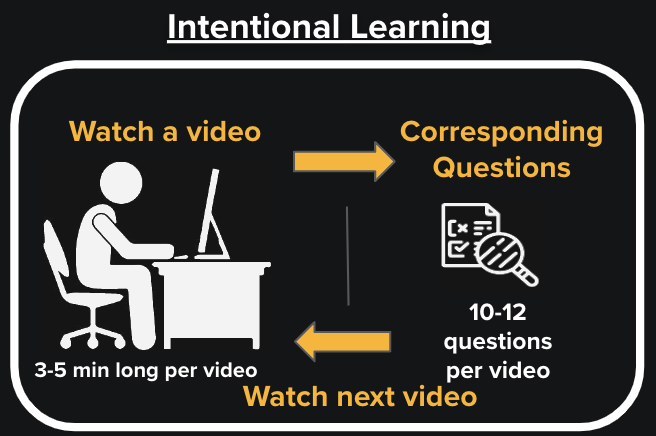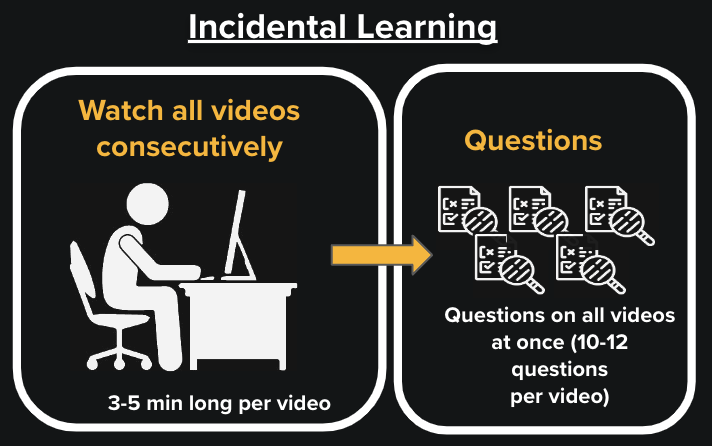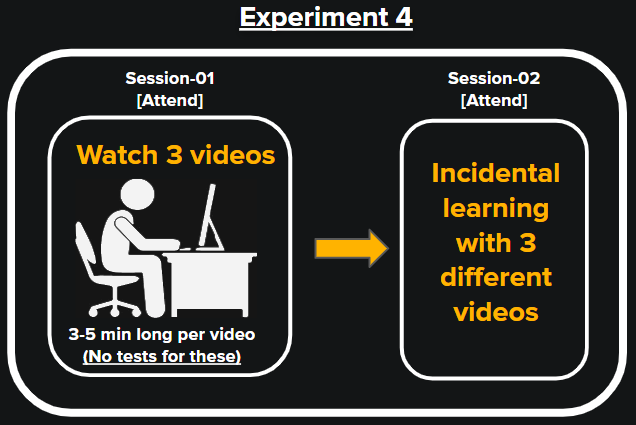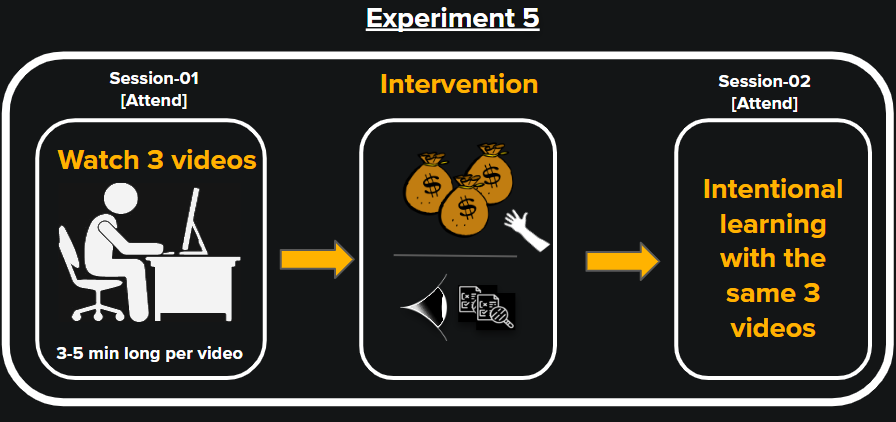Experiments
Experiment 1 Dataset
Experiment Overview

Stimuli Preview
Stimuli Quiz
Experiment Setup
In experiment 1 we only performed eye tracking, where our subjects watched 5 different informative videos and we tracked their gaze and pupil size. The position of gaze is an overt indicator of attention and this information helps researchers
understand what points of the video they’re focused on and at what points their mind starts wandering away.
This experiment was a form of intentional learning because the subjects knew they would be questioned about the contents of the video.
There was also a distracted condition in this experiment where participants counted backward silently in the mind, from a randomly chosen prime number between 800 and 1,000, in decrements of 7. This task aimed to distract the subjects from the
stimulus without requiring overt responses and is based on the serial subtraction task used to assess mental capacity and has previously been used to assess attention
The gaze position data was recorded using an Eyelink 1000 eye tracker (SR Research Ltd.). The subjects were free to move their heads, to ensure comfort (no chin rest).
A standard nine-point calibration scheme was used, using manual verification. To ensure stable pupil size recordings, the background color of the calibration screen and all instructions presented to the subjects were set to be the average luminance of all of the videos presented during the experiment.
In between each stimulus presentation a drift check was performed and tracking was recalibrated if the visual angular error was greater than 2°.
Blinks were detected using the SR research blink detection algorithm and remaining peaks were found using a peak picking algorithm. The blink and 100 ms before and after were filled with linearly interpolated values.


